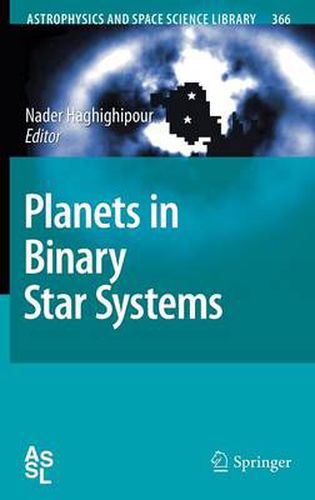Readings Newsletter
Become a Readings Member to make your shopping experience even easier.
Sign in or sign up for free!
You’re not far away from qualifying for FREE standard shipping within Australia
You’ve qualified for FREE standard shipping within Australia
The cart is loading…






This title is printed to order. This book may have been self-published. If so, we cannot guarantee the quality of the content. In the main most books will have gone through the editing process however some may not. We therefore suggest that you be aware of this before ordering this book. If in doubt check either the author or publisher’s details as we are unable to accept any returns unless they are faulty. Please contact us if you have any questions.
In 1988, in an article on the analysis of the measurements of the variations in the radial velocities of a number of stars, Campbell, Walker, and Yang reported an - teresting phenomenon;the radial velocity variations of Cephei seemed to suggest the existence of a Jupiter-like planet around this star. This was a very exciting and, at the same time, very surprising discovery. It was exciting because if true, it would have marked the detection of the ?rst planet outside of our solar system. It was surprising because the planet-hosting star is the primary of a binary system with a separation less than 19 AU, a distance comparable to the planetary distances in our solar system. The moderatelyclose orbit of the stellar companionof Cephei raised questions about the reality of its planet. The skepticism over the interpretation of the results (which was primarily based on the idea that binary star systems with small sepa- tions would not be favorable places for planet formation) became so strong that in a subsequent paper in 1992, Walker and his colleagues suggested that the planet in the Cephei binary might not be real, and the variations in the radial velocity of this star might have been due to its chromospheric activities.
$9.00 standard shipping within Australia
FREE standard shipping within Australia for orders over $100.00
Express & International shipping calculated at checkout
This title is printed to order. This book may have been self-published. If so, we cannot guarantee the quality of the content. In the main most books will have gone through the editing process however some may not. We therefore suggest that you be aware of this before ordering this book. If in doubt check either the author or publisher’s details as we are unable to accept any returns unless they are faulty. Please contact us if you have any questions.
In 1988, in an article on the analysis of the measurements of the variations in the radial velocities of a number of stars, Campbell, Walker, and Yang reported an - teresting phenomenon;the radial velocity variations of Cephei seemed to suggest the existence of a Jupiter-like planet around this star. This was a very exciting and, at the same time, very surprising discovery. It was exciting because if true, it would have marked the detection of the ?rst planet outside of our solar system. It was surprising because the planet-hosting star is the primary of a binary system with a separation less than 19 AU, a distance comparable to the planetary distances in our solar system. The moderatelyclose orbit of the stellar companionof Cephei raised questions about the reality of its planet. The skepticism over the interpretation of the results (which was primarily based on the idea that binary star systems with small sepa- tions would not be favorable places for planet formation) became so strong that in a subsequent paper in 1992, Walker and his colleagues suggested that the planet in the Cephei binary might not be real, and the variations in the radial velocity of this star might have been due to its chromospheric activities.